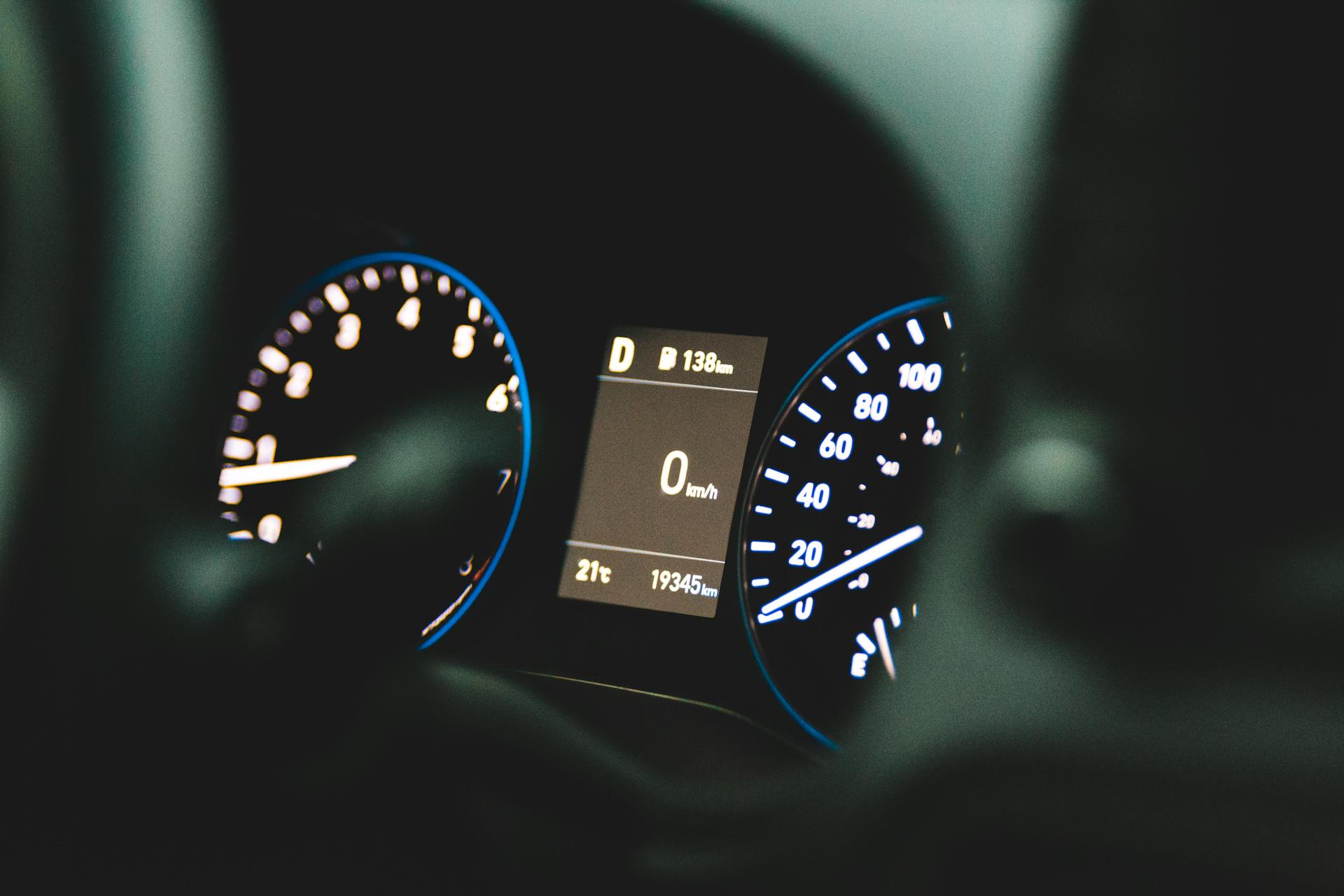
The Merton model is a widely used financial framework for pricing and managing credit risk. It's named after Robert C. Merton, who developed it in the 1970s.
The model is based on the idea that credit risk can be broken down into two components: default risk and migration risk. Default risk is the risk of a borrower defaulting on a loan, while migration risk is the risk of a borrower's credit quality deteriorating.
The Merton model uses a combination of credit spreads and volatility to estimate the probability of default. It's a key tool for investors and lenders looking to assess and manage credit risk in financial markets.
By providing a more accurate picture of credit risk, the Merton model helps investors make more informed decisions about lending and investing in bonds and other credit instruments.
For more insights, see: What Is a Good Loan Default Rate
What Is the Merton Model?
The Merton Model is a financial model developed by economist Robert C. Merton in 1974 to estimate a company's credit risk by predicting the likelihood of its default or bankruptcy.
It's primarily used in corporate bond valuation and pricing, and financial institutions and investors rely on it to assess a company's creditworthiness and manage their exposure to credit risk.
The model assumes that the value of a company's assets follows a stochastic process, typically modeled as a geometric Brownian motion, and considers the company's equity as a call option on the value of its assets, with debt acting as the strike price.
The Merton Model calculates the "distance to default" (DD), which represents the difference between a company's assets' market value and debt. A lower DD indicates a higher probability of default.
Here are the key assumptions of the Merton Model:
- Continuous-time framework
- Geometric Brownian motion for asset values
- Tradeable debt and equity
- Risk-neutral valuation
- No taxes or transaction costs
- Constant asset volatility
These assumptions are crucial to understanding how the model works and its limitations.
Key Components
The Merton model is a crucial tool in assessing credit risk. It was first proposed by economist Robert C. Merton in 1974.
The Merton model is used by stock analysts, commercial loan officers, and others to evaluate a company's creditworthiness. This model is based on the idea that a company's equity can be thought of as a call option on its assets.
Economist Robert C. Merton's work on the Merton model earned him a share of the Nobel Prize for economics in 1997. He shared this honor with fellow economist Myron S. Scholes.
Expand your knowledge: Can a Private Company Sell Shares to the Public
Calculations and Formulas
The Merton model uses a mathematical formula to estimate the probability of default and assess credit risk. This formula calculates the "distance to default" (DD), representing the difference between a company's asset value and debt obligations.
The formula for the Merton Model can be expressed as DD = (ln(V / D) + (r + σ²/2) × T) / (σ × √T), where V is the market value of a company's assets, D is the market value of a company's debt, ln denotes the natural logarithm, r is the risk-free interest rate, σ is the volatility of the company's asset value, and T is the time to maturity of the debt.
In the Merton Model, the numerator calculates the expected excess return on assets, while the denominator standardizes the numerator by dividing it by the standard deviation of asset returns. The numerator measures the expected excess return of the company's assets, capturing the relative size of the company's assets compared to its debt obligations.
Explore further: Credit vs Default Risk
To calculate the probability of default, the Merton Model uses the cumulative standard normal distribution function (N) to calculate the probability that the value of the company's assets will be less than the debt at maturity. This is given by N(−d2), where d2 is calculated as d1−σVT^0.5.
Here is a summary of the variables used in the Merton Model:
- V: Current market value of assets
- D: Face value of debt
- r: Risk-free interest rate
- σ: Volatility (standard deviation) of asset value
- T: Time to maturity of debt
- N: Cumulative standard normal distribution
Formula
The Merton Model employs a mathematical formula to estimate the probability of default and assess credit risk. This formula calculates the "distance to default" (DD), representing the difference between a company's asset value and debt obligations.
A lower distance to default indicates a higher probability of default. The formula for the Merton Model can be expressed as follows:
DD = (ln(V / D) + (r + σ²/2) × T) / (σ × √T)
Where:
- DD represents the distance to the default
- V is the market value of a company's assets
- D is the market value of a company's debt
- ln denotes the natural logarithm
- r is the risk-free interest rate
- σ is the volatility of the company's asset value
- T is the time to maturity of the debt
The numerator calculates the expected excess return on assets. The denominator standardizes the numerator by dividing it by the standard deviation of asset returns.
Black-Scholes
The Black-Scholes model is a formula used to calculate the value of options. It was developed by Fischer Black and Myron Scholes in 1973.
The model was actually built upon earlier work by Robert Merton, who was a student at MIT at the time. Merton later modified the formula's name to the Black-Scholes model.
The Black-Scholes model is a crucial tool for investors and traders, as it helps to determine the value of options and reduce risk. By hedging an option, systematic risk can be eliminated, as Merton demonstrated with his derivative.
The Black-Scholes model has had a lasting impact on the world of finance, and its principles continue to be used today.
Suggestion: Calculating Expected Shortfall
Risk and Credit
The Merton model is used by both investors and analysts to evaluate the credit risk associated with a company's debt. This involves understanding the company's capability to meet its financial obligations and service its debt.
The Merton model is based on the idea that a firm's equity value can be modeled as a call option on its value with the firm's face value of the debt as a strike price. This is a key concept in the Merton distance to default (DD) model.
The Merton distance to default (DD) model explicitly defines the failure of a firm to meet its debt obligations as a default-triggering event. This is a crucial aspect of credit risk evaluation.
Credit Risk
Credit risk is a crucial aspect of understanding a company's financial health. The Merton model is an analysis model used to evaluate the credit risk associated with a company's debt.
Investors and analysts use the Merton model to understand a company's ability to meet its financial obligations and service its debt. This helps them weigh the possibility of the business going into credit default.
The Merton distance to default (DD) model is based on Merton's bond pricing model. It models the equity value of the firm as a call option on its value with the firm's face value of the debt as a strike price.
A company's failure to meet its debt obligations is considered a default-triggering event in the Merton model. This is the event that determines the credit risk associated with the company's debt.
Risk-Free Interest Rate
The risk-free interest rate is a theoretical rate of return on an investment carrying zero risk, although no investment is entirely without risk.
This rate is considered theoretical because it's based on the assumption that some investments come closer to being risk-free than others.
The risk-free interest rate is assumed to be constant, which is why it's used as a benchmark in financial models.
On a similar theme: Modern Portfolio Theory and Investment Analysis
Featured Images: pexels.com


